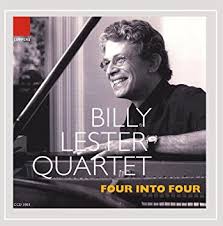As the title implies, this song is certainly bouncy—its rhythmic snap is what holds it together. Like most Billy Lester songs, Skip's Bounce has more bebop-esque, stop-and-start rhythms than the evenly flowing lines more typical of the Lennie Tristano school, while still being very much in that vein melodically.
The harmonic foundation for Skip's Bounce is There Will Never Be Another You, but this source material is heavily disguised in both the head and solo changes. The tonic E♭maj7 at the beginning is replaced by D♭7; the descending resolutions in the last four measures of There Will Never Be Another You are smoothed over in the head of Skip's Bounce with alternating F7 and B♭7. The melody does not repeat in the second half, filling the 32-measure form with darting, stabbing lines complemented by rhythm section figures. Many of these figures fill in around the melody, but near the end of the head the piano and bass double the melody. Our bass part has melody cues indicated below the staff.
The solo changes, like the head, start with D♭7 instead of E♭ major. The last four measures are similar to those of the head, but the descending sequence in There Will Never Be Another You can also be used.
Skip's Bounce is named for drummer Skip Scott, who played on Billy's second album, "
At Liberty." Skip recorded alongside trumpeter Simon Wettenhall on vocalist
Judy Niemack's debut album, "By Heart", in 1978. Skip is the son of drummer Dick Scott, best known for his work with Lee Konitz in the '50s. Both Scotts recorded with Warne Marsh; Dick played on Warne's 1960 album "Release Record, Send Tape," and Skip on "Live at the Village Vanguard" in 1981.
In addition to our lead sheets, we have a piano part as played by Billy on the recording. He doubles the melody with the trumpet, with only a few right hand voicings. Many of the accompanying left hand voicings are quite low in register. In a couple of places he plays the melody in both hands in octaves.


